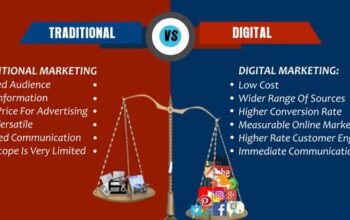User experience (UX) and user interface (UI) design are different concepts with distinct purposes. UI design is concerned with how users interact with products while UX design is focused on what the product is doing for them.
Consistency is essential in UI web design. This includes font sizes, colors, button styles and spacing, illustrations, photo choices and more.
1. Keep it simple
A website with too many components will be confusing to users and make them leave your site quickly. This is a major reason why user experience matters so much.
A simple design scheme is important because it allows users to easily navigate your website and find the information they’re looking for. It also helps with consistency, which is another key element of good UX design. Consistency makes the website feel natural and intuitive to use.
For example, using a consistent font throughout the website helps keep it looking professional and organized. In addition, using contrasting colors on elements like headlines and call to action buttons helps them stand out against the background. This also increases user engagement by making them more visually interesting and appealing.
Additionally, keeping it simple means avoiding overwhelming your users with too much information. Your users’ working memory can only hold about 5-9 pieces of information at a time, so it’s better to limit the amount of information on your page to what is most important. This will help improve user satisfaction by reducing cognitive overload.
2. Make it mobile-friendly
Nowadays, most people have smartphones and can browse the internet at any time. That’s why it’s important to make your website mobile-friendly. Otherwise, you might lose a big part of your audience.
For example, don’t use different font sizes in your text; this makes it hard to read on mobile devices. Instead, pick a single font size that works for both desktop and mobile users. It’s also recommended to use proper cascading for titles, as well as generous spacing between paragraphs. That way, you can separate the information into smaller, scannable sections.
Another thing to keep in mind is that mobile users are usually on the go and don’t want to spend a lot of time waiting for your site to load. They’re more concerned with network connectivity and prefer a website that loads quickly without beating around the bush. They’re also less likely to stick around if they can’t find the content they need on your site. That’s why it’s good to have navigational tools like a search bar near the top of your page or app.
3. Make it easy to find
When it comes to designing a website, user experience is an important factor. A website is often one of the first things a potential customer will see, and can have a major impact on their decision to contact you or purchase your product. A poor website can put off customers and cause them to turn away, but a good UX design will keep them engaged and happy with your business.
Make sure your site has easy navigation and original, engaging content. It’s also crucial to be mindful of your audience when choosing images. For example, if you have an older demographic, use images of people that are representative of them. People feel more comfortable and at ease when they are able to relate to the content they’re viewing.
It’s also important to catch any 404 errors that may be present on your site. These are a big source of frustration for users and can prevent them from taking action on your site. By eliminating these obstacles, you can give your visitors a more seamless experience that will help them achieve their goals.
4. Make it intuitive
It’s no secret that customers today demand easy ways to meet their needs and solve their pain points. And for most businesses, this means having a website that’s intuitive and easy to use. In fact, studies show that most customers write off a company’s website in a matter of seconds if they don’t find it useful or easy to navigate.
The first step to making your UX design intuitive is understanding your audience’s needs and demands. For example, if users are unable to understand the terminology you use on your website, it will be difficult for them to navigate your pages. To avoid this, consider using language that your audience is familiar with and presenting it in an easy-to-understand format.
Another way to make your user interface intuitive is by utilizing the principles of visual hierarchy. This technique involves arranging elements of your web page to draw the attention of viewers to the most important information. This can be done by using techniques like the figure-ground principle and symmetry and order. By following these simple tips, you can create a website that’s both intuitive and visually appealing.
5. Make it beautiful
Websites should be more than just aesthetically pleasing – they should also be useful and easy to use. If a site is too hard to navigate or not intuitive, users will quickly lose interest and move on to another website. Luckily, with the tips below, you can design a website that is both user-friendly and beautiful.
Consistency is key when designing a UX-friendly website. This means that the font size, colors, and overall layout should be consistent throughout the entire site. This will make it easier for visitors to navigate from page to page and will give the website a more professional look.
One of the most important factors when creating a user-friendly website is to make sure that it loads quickly. Today’s users have short attention spans and will often leave a website if it doesn’t load within a few seconds. This can be due to a number of reasons, including an overwhelming amount of information or slow internet speeds. It’s crucial to test your website to ensure that it loads quickly and efficiently.



